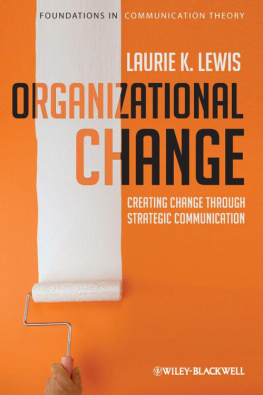Kathleen M. Galvin - Family Communication: Cohesion and Change (9th Edition)
Here you can read online Kathleen M. Galvin - Family Communication: Cohesion and Change (9th Edition) full text of the book (entire story) in english for free. Download pdf and epub, get meaning, cover and reviews about this ebook. year: 2015, publisher: Routledge, genre: Home and family. Description of the work, (preface) as well as reviews are available. Best literature library LitArk.com created for fans of good reading and offers a wide selection of genres:
Romance novel
Science fiction
Adventure
Detective
Science
History
Home and family
Prose
Art
Politics
Computer
Non-fiction
Religion
Business
Children
Humor
Choose a favorite category and find really read worthwhile books. Enjoy immersion in the world of imagination, feel the emotions of the characters or learn something new for yourself, make an fascinating discovery.
- Book:Family Communication: Cohesion and Change (9th Edition)
- Author:
- Publisher:Routledge
- Genre:
- Year:2015
- Rating:5 / 5
- Favourites:Add to favourites
- Your mark:
- 100
- 1
- 2
- 3
- 4
- 5
Family Communication: Cohesion and Change (9th Edition): summary, description and annotation
We offer to read an annotation, description, summary or preface (depends on what the author of the book "Family Communication: Cohesion and Change (9th Edition)" wrote himself). If you haven't found the necessary information about the book — write in the comments, we will try to find it.
Family Communication: Cohesion and Change (9th Edition) — read online for free the complete book (whole text) full work
Below is the text of the book, divided by pages. System saving the place of the last page read, allows you to conveniently read the book "Family Communication: Cohesion and Change (9th Edition)" online for free, without having to search again every time where you left off. Put a bookmark, and you can go to the page where you finished reading at any time.
Font size:
Interval:
Bookmark:
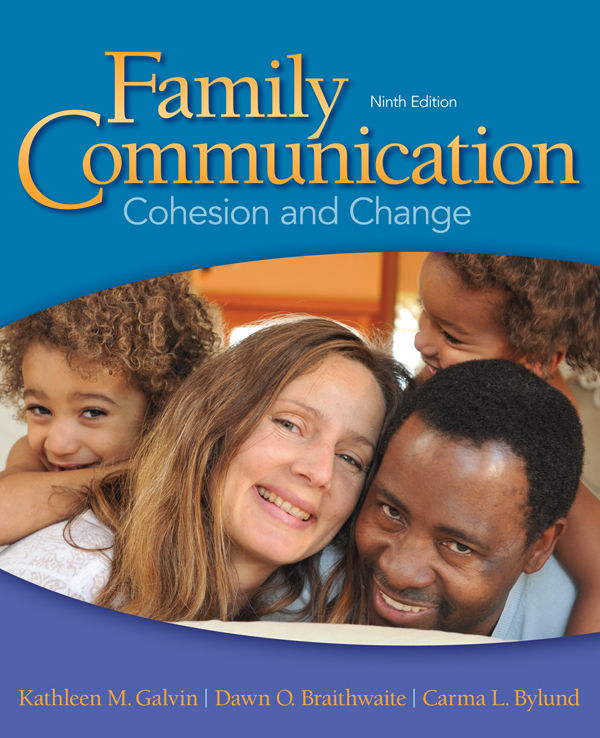
Ninth Edition
Family Communication
Cohesion and Change
Kathleen M. Galvin
Northwestern University
Dawn O. Braithwaite
Northwestern University
Carma L. Bylund
Northwestern University

First published 2015, 2012, 2008 by Pearson Education, Inc.
Published 2016 by Routledge
2 Park Square, Milton Park, Abingdon, Oxon OX14 4RN
711 Third Avenue, New York, NY 10017, USA
Routledge is an imprint of the Taylor & Francis Group, an informa business
Copyright 2015, 2012, 2008 Taylor & Francis. All rights reserved.
All rights reserved. No part of this book may be reprinted or reproduced or utilised in any form or by any electronic, mechanical, or other means, now known or hereafter invented, including photocopying and recording, or in any information storage or retrieval system, without permission in writing from the publishers.
Notice:
Product or corporate names may be trademarks or registered trademarks, and are used only for identification and explanation without intent to infringe.
Credits and acknowledgments borrowed from other sources and reproduced, with permission, in this textbook appear on appropriate page within text (or on ).
ISBN: 9780205790760 (pbk)
Cover Designer: Bruce Kenselahar
Library of Congress Cataloging-in-Publication Data
Galvin, Kathleen M.
Family communication : cohesion and change/Kathleen M. Galvin, Northwestern University,
Carma L. Bylund, Hamad Medical Center, Doha, Qatar, Memorial Sloan-Kettering Cancer Center,
Dawn O. Braithwaite, University of Nebraska.
pages cm.
Includes bibliographical references and index.
ISBN-13: 978-0-205-94523-8
ISBN-10: 0-205-94523-6
1. Communication in familiesUnited States. 2. Interpersonal communication
United States. I. Title.
HQ734.G19 2015
306.85dc23
2013047760
To my family: the Galvins, Wilkinsons, Nicholsens, and Sullivans,
plus the special friends I consider as my family. KMG
To all my familiesadoptive, stepfamily, voluntary, beagle
and especially my husband, Chuck. Thanks to all of you, its
a wonderful life. DOB
To the many people I am privileged to call family, especially Greg,
Thurman, Nicholas, and Madeline. CLB
It is with amazement and a deep sense of gratitude that we introduce the ninth edition of Family Communication: Cohesion and Change. The first edition, published over 30 years ago, represented the first textbook to explore the family from a communication perspective. At that time few communication classes addressed the subject, and only a small number of communication scholars conducted research in the area. Currently, most communication departments in colleges and universities offer one or more courses on the subject at both the undergraduate and graduate levels. The field has progressed from an early period when marital communication dominated the research agenda to the present when scholars address interaction within multiple family forms; there is a research journal devoted to family communication scholarship, and the number of family communication scholars and students is at an all-time high.
The authorship team has changed over these years. Kathleen M. Galvin initiated the book project in 1980 and the first copy was published in 1982. Bernard J. Brommel served as coauthor on the first five editions; Carma L. Bylund assumed that role for the next three editions. Dawn O. Braithwaite joined Galvin and Bylund as the second author for this ninth edition.
Historically, family interactions have received scholarly attention from family therapists, academic psychologists, and sociologists, who studied family issues at the macro level. Today, family scholars rely on a wide range of theories developed within the family communication field and in areas of social sciences. Contemporary scholars address questions related to family members interactions within a wide range of family forms and address interactions across the life span and within multiple cultures, relying on theories developed within the social sciences as well as those developed by family communication researchers. Todays scholars undertake their studies using multiple quantitative and qualitative methodologies that have grown increasingly sophisticated with each passing decade. As an increasing number of communication scholars focus on family interaction, their findings contribute increased depth and insight to each edition of the book.
Our basic premise remains the samecommunication processes create and reflect family systems and family identity. Relying on a range of theoretical perspectives, we examine the communication patterns enacted within families to demonstrate how these patterns affect, and are affected by, family life in the twenty-first century. Our objective focus remains to describe family interaction patterns rather than to prescribe specific interaction practices because we believe there are multiple ways to be a well-functioning family. We believe that readers will be in the best position to make their own choices about family communication when they have in-depth and up-to-date information on family interactions processes.
Throughout the book we present a range of family experiences, including introductory case examples that open each chapter, and de-identified real-life examples appear throughout the text. These are first-person examples provided by our students, friends, and family members. These personal examples ground the theory and research in real-life experiences.
We made multiple changes in this edition based on feedback from instructors using this book as well as from thoughtful reviewers and comments from our students. Each chapter has been revised to keep pace with changes in the discipline and the state of everyday family life. More specifically we have developed sections that address the following topics: communication challenges in military families, the increasing impact of new technologies on family interaction, shifts in structured aging patterns to highly flexible ones. We have also paid increased attention to international and ethnic families as well as to national crisis situations.
In addition to updating the research base in every chapter, we now begin each chapter with learning objectives readers can expect to address. Other changes include the following:
: Expanded the Families: current status section and the discussion of emerging family forms
: Updated the primary and secondary functions framework
: Updated the description of theories with a special focus on advances in relational dialectics theory
: Added a new mediated section to networks and expanded the narrative section addressing varied family forms and storytelling practices
: Added a section on respect and expanded the rituals section
: Expanded the treatment of diversity and sexuality
: Explored the increasing complexity of family and gender roles
: Developed the focus on power as negotiated in interaction across diferent family forms
: Expanded the discussion of conficts as managed rather than resolved and the characteristics of negotiating confict as an interpersonal family process
: Enlarged the discussion of the role of communication in life stages and across the life course
Font size:
Interval:
Bookmark:
Similar books «Family Communication: Cohesion and Change (9th Edition)»
Look at similar books to Family Communication: Cohesion and Change (9th Edition). We have selected literature similar in name and meaning in the hope of providing readers with more options to find new, interesting, not yet read works.
Discussion, reviews of the book Family Communication: Cohesion and Change (9th Edition) and just readers' own opinions. Leave your comments, write what you think about the work, its meaning or the main characters. Specify what exactly you liked and what you didn't like, and why you think so.

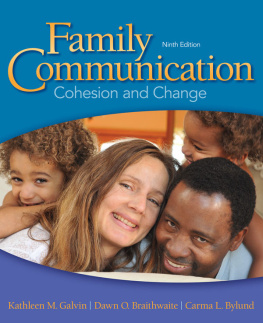


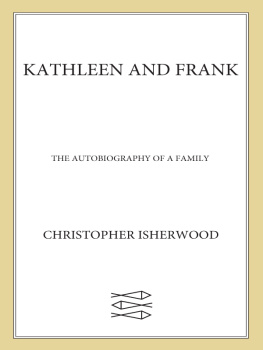

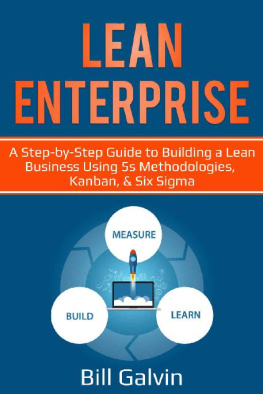
![Kathleen Jamie [Kathleen Jamie] - Among Muslims](/uploads/posts/book/141349/thumbs/kathleen-jamie-kathleen-jamie-among-muslims.jpg)
